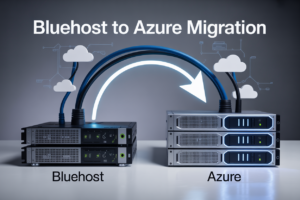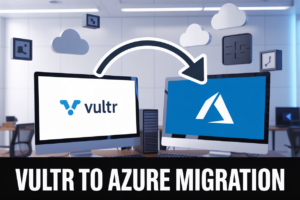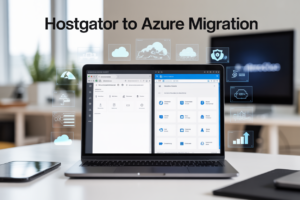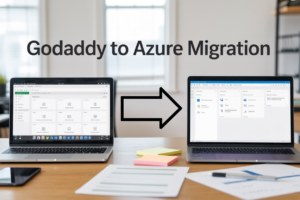Ever spent an entire day manually sorting through documents, comparing contracts, or trying to extract data for analysis? That’s a day of your life you’ll never get back.
But what if your AWS environment could not only read those documents but actually understand them—creating summaries, finding differences, and turning unstructured text into structured SQL queries?
Building intelligent document processing with AWS AI services isn’t just a nice-to-have anymore. It’s becoming essential for any organization drowning in paperwork, contracts, and unstructured data.
I’ve helped dozens of companies implement these solutions, and there’s always that moment when they realize just how much time they’ve been wasting on manual document work.
But here’s what most tutorials won’t tell you about making these systems actually deliver value…
Understanding Intelligent Document Processing (IDP)

Key benefits of IDP for businesses
Ever been buried under mountains of paperwork? Traditional document processing is a nightmare. Intelligent Document Processing (IDP) changes everything by combining AI and machine learning to handle documents automatically.
The benefits? Massive. Companies using IDP see processing times cut by up to 80%. Think about that – what took days now takes hours.
Cost savings are just the beginning. When your team isn’t manually keying in data from invoices or contracts, they can focus on work that actually moves the needle for your business.
The accuracy boost is dramatic too. Human processing typically has a 3-4% error rate. IDP systems? Less than 1%. That’s the difference between constant corrections and smooth operations.
Common document processing challenges
Document processing without AI is basically a game of whack-a-mole with problems:
- Inconsistent formats: PDFs, scans, images, handwritten notes – each requiring different handling
- Data extraction headaches: Trying to pull specific information from unstructured documents
- Volume overload: When thousands of documents hit your desk monthly
- Compliance nightmares: Missing critical information can lead to serious regulatory issues
These aren’t just annoyances – they’re business killers. When processing delays happen, everything downstream suffers.
How AWS AI services transform document management
AWS AI doesn’t just improve document processing – it completely reinvents it.
With services like Amazon Textract, you can automatically pull text, tables and forms from virtually any document. The system gets smarter over time, learning your specific document types.
Amazon Comprehend takes it further by understanding what those documents actually mean – identifying entities, sentiment, and key phrases without human intervention.
The real magic happens when these services work together. Documents automatically route to the right departments, critical information gets flagged, and your entire workflow transforms.
Real-world use cases for intelligent document solutions
IDP isn’t theoretical – it’s changing how real businesses operate right now:
- Financial services: Processing loan applications in minutes instead of days, with higher accuracy
- Healthcare: Extracting patient information from medical records while maintaining HIPAA compliance
- Legal: Analyzing thousands of contracts to identify specific clauses or potential risks
- Insurance: Automating claims processing from initial submission to payment
One insurance company reduced claims processing time from 2 weeks to 48 hours while improving accuracy by 30%. That’s not incremental improvement – it’s transformation.
The best part? Implementation doesn’t require a complete system overhaul. AWS’s modular approach means you can start small and expand as you see results.
AWS AI Services for Document Analysis
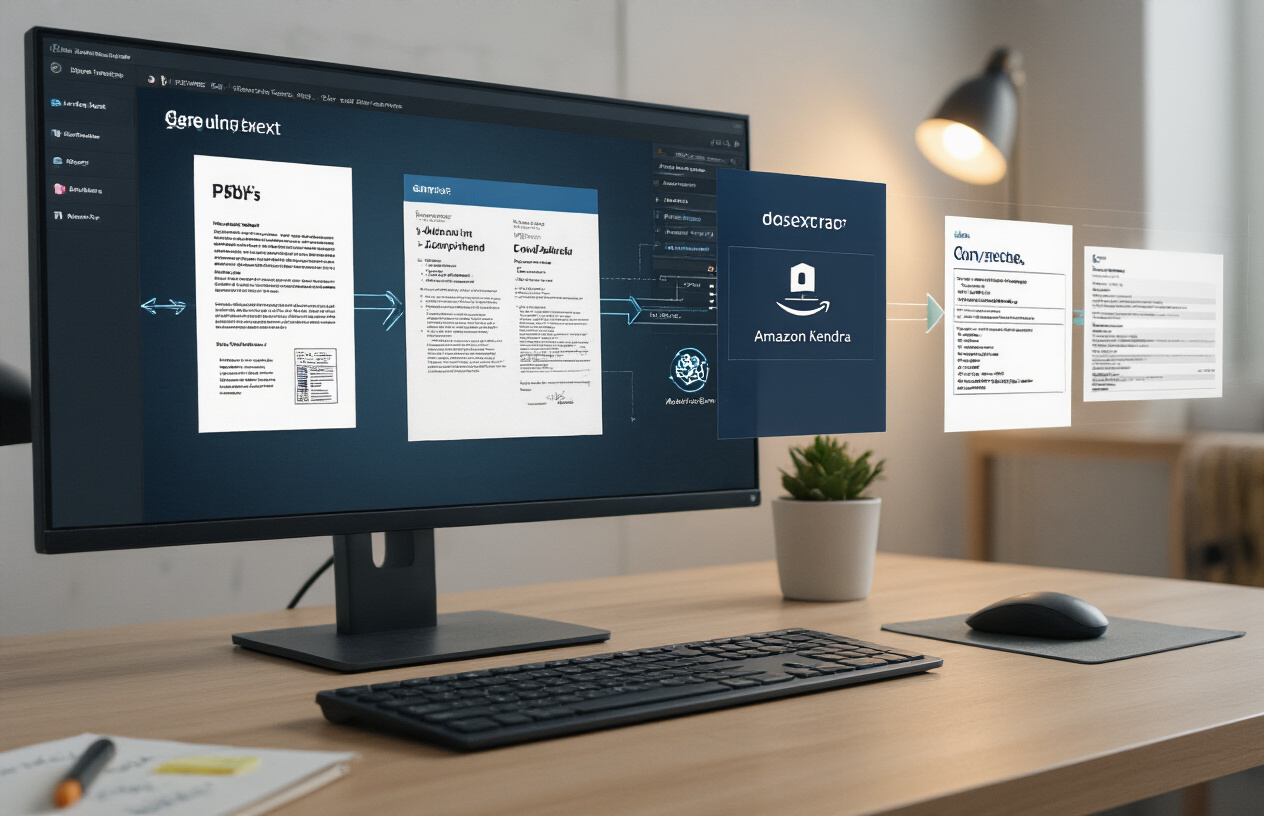
Amazon Textract for text extraction
Document processing starts with getting the text off the page. That’s where Amazon Textract shines. It pulls text, tables, and forms from scanned documents with impressive accuracy.
Unlike basic OCR tools, Textract understands document structure. It knows the difference between a paragraph, a table cell, and a form field. This contextual understanding means you get data that’s ready to use, not just a mess of text.
Textract handles everything from simple receipts to complex multi-page financial statements. What used to take hours of manual data entry now happens in seconds.
Amazon Comprehend for entity and sentiment analysis
Once you’ve got the text, you need to understand what it means. Amazon Comprehend digs into your documents to find the important stuff.
Comprehend automatically identifies:
- People, places, and organizations
- Key phrases and concepts
- Personal information (PII)
- Custom entities specific to your business
It also determines sentiment—is that customer feedback positive, negative, or neutral? This kind of analysis turns raw text into actionable insights.
Amazon Bedrock for generative AI capabilities
Bedrock takes document processing to a whole new level with foundation models that can understand context and generate human-quality content.
With Bedrock, you can:
- Summarize lengthy documents
- Answer complex questions about document content
- Generate comparisons between multiple documents
- Create SQL queries based on natural language questions
The best part? You can access models like Claude, Llama 2, and Amazon Titan through a single API without managing any infrastructure.
How these services work together in a document pipeline
A typical document processing pipeline looks something like this:
- Textract extracts raw text and structure from documents
- Comprehend identifies entities and sentiment
- Bedrock generates summaries or answers questions
- Custom logic applies business rules to the enriched data
This integration creates a powerful workflow. A customer contract can go from PDF to structured data to actionable insights in minutes, not days.
Cost considerations and optimization strategies
AI services are powerful but can get expensive if you’re not careful. Here’s how to keep costs in check:
- Batch processing for non-urgent documents
- Sample documents first to estimate costs
- Use asynchronous APIs for large documents
- Cache results when processing the same document multiple times
- Consider reserved capacity for predictable workloads
For example, processing 1,000 pages daily with all three services might cost around $300-500 monthly. But optimize your workflow, and you could cut that in half.
Smart cost management means you get all the benefits of AI-powered document processing without breaking the bank.
Building Document Summarization Systems

Extracting key information from lengthy documents
Documents pile up fast. Whether you’re analyzing contracts, research papers, or business reports, nobody has time to read every single word. That’s where document summarization comes in clutch.
AWS AI services let you pull out the important stuff without the manual grind. The magic happens through natural language processing that identifies key sentences, topics, and insights that actually matter.
The real power move? Training these systems to recognize what’s important for YOUR specific business. Legal teams need different highlights than marketing departments. AWS comprehend custom classification models can be tuned to recognize industry-specific terminology and focus on extracting exactly what you need.
Implementing customized summarization with AWS AI
Off-the-shelf summarization is cool, but custom is where it’s at. With AWS Bedrock, you can fine-tune large language models to create summaries that match your exact specifications.
Here’s what makes AWS customization rock:
- Control over summary length (from quick bullet points to detailed abstracts)
- Focus on specific document sections only
- Template-based outputs for consistent formatting
- Domain adaptation for specialized content
The implementation is surprisingly straightforward. You pipe your documents through Amazon Textract for text extraction, then into your customized summarization model, and finally into whatever storage or notification system works for your workflow.
Handling different document types and formats
Documents come in all shapes and sizes. PDFs, Word docs, scanned images, you name it.
AWS handles this document chaos through a multi-step approach:
- Amazon Textract converts everything to machine-readable text
- Custom pre-processing strips away the formatting noise
- Document structure recognition preserves the meaningful organization
- Format-specific extraction rules catch the nuances
Scanned documents used to be a nightmare, but with AWS’s OCR capabilities, even handwritten notes can be summarized effectively. Tables and charts? Those get special treatment with AI that understands visual data relationships before summarizing them.
Measuring summarization quality and accuracy
Good summaries aren’t just shorter—they’re accurate. AWS provides evaluation metrics that actually matter:
- Content coverage percentage
- Key information retention rate
- Factual accuracy scores
- Readability metrics
The smartest companies implement feedback loops where users rate summary quality, creating a continuous improvement cycle. This human-in-the-loop approach helps models learn what your organization values in summaries.
You can also run automated checks comparing summaries against reference documents to catch any critical omissions or misrepresentations. Nothing’s worse than a summary that misses the point or gets facts wrong.
Document Comparison Capabilities

A. Identifying differences between document versions
Document versions pile up fast in business environments. AWS’s AI-powered comparison tools can spot what changed between versions in seconds instead of the mind-numbing manual review you’d otherwise face.
The technology uses advanced natural language processing to detect:
- Added or removed paragraphs
- Modified sentences and phrases
- Changed numerical values
- Shifted formatting elements
Unlike basic “diff” tools, AWS’s intelligent comparison understands context. It recognizes when a paragraph was rewritten but maintains the same meaning, or when critical information has been substantively altered.
B. Extracting and comparing critical data points
When comparing documents, not all differences matter equally. AWS AI services can:
- Pull out key data points from both documents
- Align matching fields automatically
- Highlight discrepancies in values that actually matter
For example, in contract review, the system flags changes in dates, monetary values, and obligation clauses while ignoring stylistic edits. This precision focus saves hours of review time.
C. Building automated change detection workflows
With AWS Step Functions and Lambda, you can create end-to-end workflows that:
Document uploaded → Comparison against baseline → Notification of critical changes → Approval routing
These workflows integrate with your existing document management systems and can trigger downstream processes based on specific detected changes.
D. Visualizing document differences for better understanding
AWS visualization tools transform complex document differences into intuitive formats:
- Side-by-side highlights showing exactly what changed
- Heat maps indicating areas with the most significant modifications
- Summary dashboards quantifying changes by document section
- Change timelines tracking modifications across multiple versions
These visual representations make complex document changes immediately understandable to stakeholders without technical expertise.
Generating SQL from Natural Language
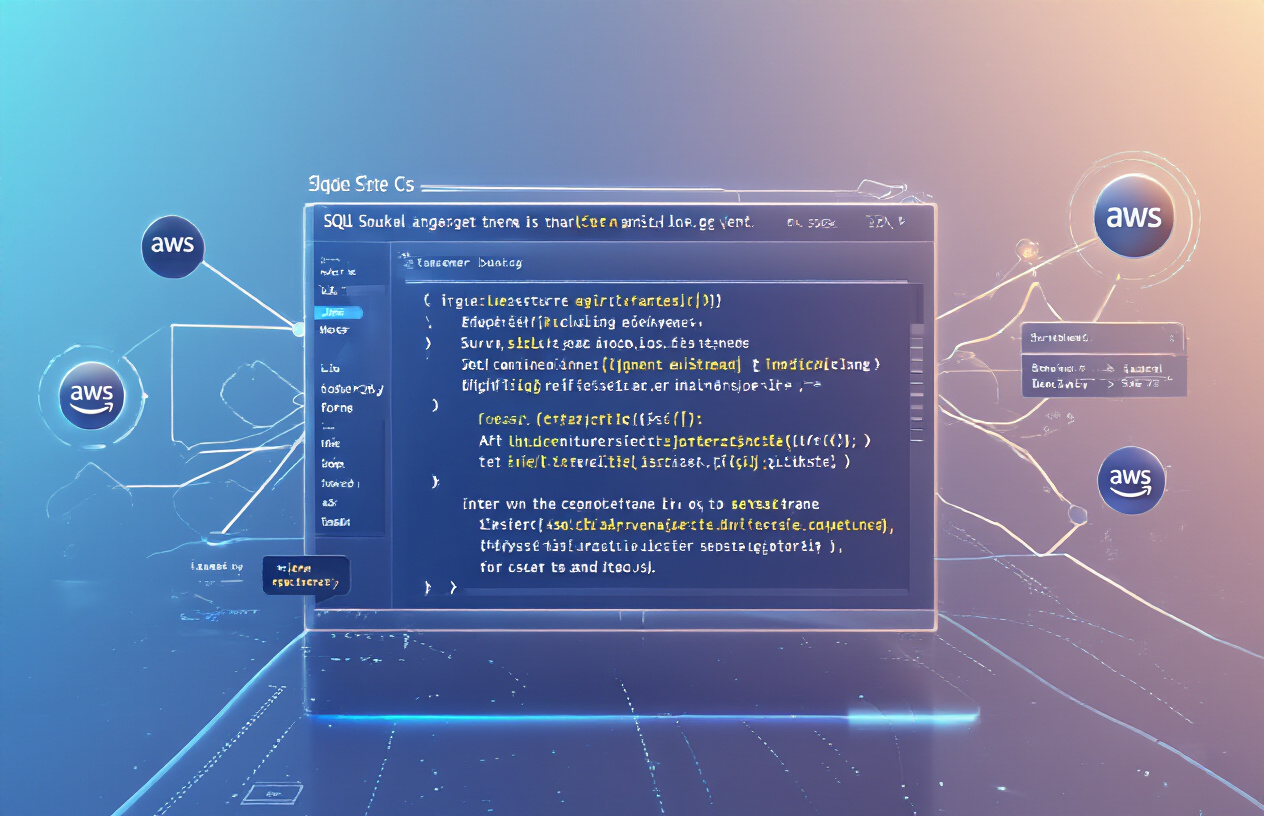
Converting document data into structured queries
Turning document text into database queries isn’t magic – it’s a game-changer for businesses drowning in paperwork. Instead of manually sifting through contracts or reports to extract data, you can now ask questions in plain English and get SQL queries that pull exactly what you need.
The core of this process is using large language models to bridge the gap between human language and database language. These models analyze text, identify entities like dates, names, or amounts, and translate your request into proper SQL syntax.
Think about scanning an invoice and asking “How much did we pay vendor XYZ last quarter?” The system parses the document, identifies the question intent, and generates a SQL query that filters by vendor name and date range.
Training models to understand domain-specific terminology
Generic language models struggle with industry jargon. A “draw” means something completely different in banking than in art or sports. That’s why domain adaptation is critical.
You can fine-tune foundation models using:
- Sample documents from your industry
- Pairs of natural language questions with correct SQL queries
- Domain-specific glossaries and taxonomies
This training teaches the model that in healthcare, “episodes” likely refers to patient visits rather than TV shows, dramatically improving accuracy for your specific needs.
Implementing SQL generation with Amazon Bedrock
Amazon Bedrock makes this implementation surprisingly straightforward. You don’t need to be an AI expert to get started.
import boto3
bedrock = boto3.client('bedrock-runtime')
def generate_sql(document_text, user_query):
prompt = f"""
Document: {document_text}
Generate a SQL query for the following question: {user_query}
"""
response = bedrock.invoke_model(
modelId='anthropic.claude-v2',
body=json.dumps({
"prompt": prompt,
"max_tokens_to_sample": 500,
"temperature": 0.1
})
)
return json.loads(response['body'].read())['completion']
The beauty of Bedrock is you can experiment with different models like Claude or Titan to find what works best for your documents.
Error handling and query validation techniques
Raw generated SQL can’t be trusted blindly. Smart systems implement multiple safeguards:
- Syntax validation to catch missing semicolons or parentheses
- Schema compliance checks to verify table and column names exist
- Query execution simulation in sandboxed environments
- Type checking to ensure proper data formats
A robust implementation might use a two-pass approach: first generating the SQL, then having the model self-review and correct any errors before execution.
For critical applications, keeping humans in the loop for review is still recommended, especially for complex queries that modify data.
Security considerations for generated SQL
SQL injection through AI is a real concern. When your system converts natural language to database queries, it creates a new attack vector if not properly secured.
Essential safeguards include:
- Parameterized queries to separate code from data
- Query whitelisting to limit operations to read-only unless explicitly authorized
- Permission boundaries based on user roles
- Rate limiting to prevent abuse
- Audit logging of all generated and executed queries
The safest implementations often restrict generated SQL to pre-approved query templates, allowing the model to fill in parameters but not create arbitrary queries.
Implementation Best Practices

A. Architecting scalable document processing pipelines
Building a document processing system that can handle everything from a trickle to a tsunami of documents isn’t just nice-to-have—it’s critical for success with AWS IDP solutions.
Start with a serverless approach using AWS Lambda for processing spikes without maintaining idle infrastructure. For complex workflows, Step Functions let you orchestrate multi-stage processing while handling retries and error paths automatically.
Document storage needs careful planning too. Consider this architecture:
- S3 for raw document storage with lifecycle policies
- DynamoDB for metadata and processing status
- Amazon Elasticsearch for full-text search capabilities
Don’t reinvent the wheel with queuing. SQS provides the buffer you need between document ingestion and processing, preventing system overload during peak times.
B. Ensuring data privacy and compliance
Security isn’t optional when handling documents. Period.
Implement these non-negotiable practices:
- Encrypt documents at rest using S3 server-side encryption
- Use KMS for key management with regular rotation
- Enable CloudTrail for comprehensive audit logs
For regulated industries, AWS provides GDPR, HIPAA, and PCI DSS compliant services—but you still need to configure them correctly. Document classification should happen early in your pipeline to apply appropriate controls based on sensitivity.
Create IAM roles with least privilege principles, ensuring each component has exactly the permissions it needs and nothing more.
C. Optimizing for performance and cost
AWS document processing can get expensive fast if you’re not careful.
Right-size your Lambda functions—memory affects CPU allocation and processing speed. Testing revealed that 1024MB often hits the sweet spot for document processing tasks rather than defaulting to minimum settings.
Cache aggressively. Previously processed documents or common extractions should live in ElastiCache to avoid redundant processing costs.
Batch similar documents together when possible. The Textract pricing model rewards processing multiple pages in a single call rather than individual calls per page.
Consider reserved capacity for predictable workloads—on-demand is great for spikes, but prepaid capacity often slashes costs by 40%+ for baseline processing.
D. Monitoring and troubleshooting your IDP solution
You can’t fix what you can’t see. Implement comprehensive monitoring from day one.
Set up CloudWatch dashboards tracking:
- Processing success/failure rates
- End-to-end processing times
- Queue depths and backlog trends
- Error categories by document type
When issues arise (and they will), having structured logging pays off. Ensure every step in your pipeline logs in a consistent JSON format with correlation IDs to trace documents through the system.
For AI service issues, know the difference between confidence scores and accuracy. Low confidence doesn’t always mean incorrect results—it means you need human review processes as backup.
Create canary tests with known documents to detect subtle degradation in extraction quality over time before it impacts users.
Future-Proofing Your Document Processing Solution
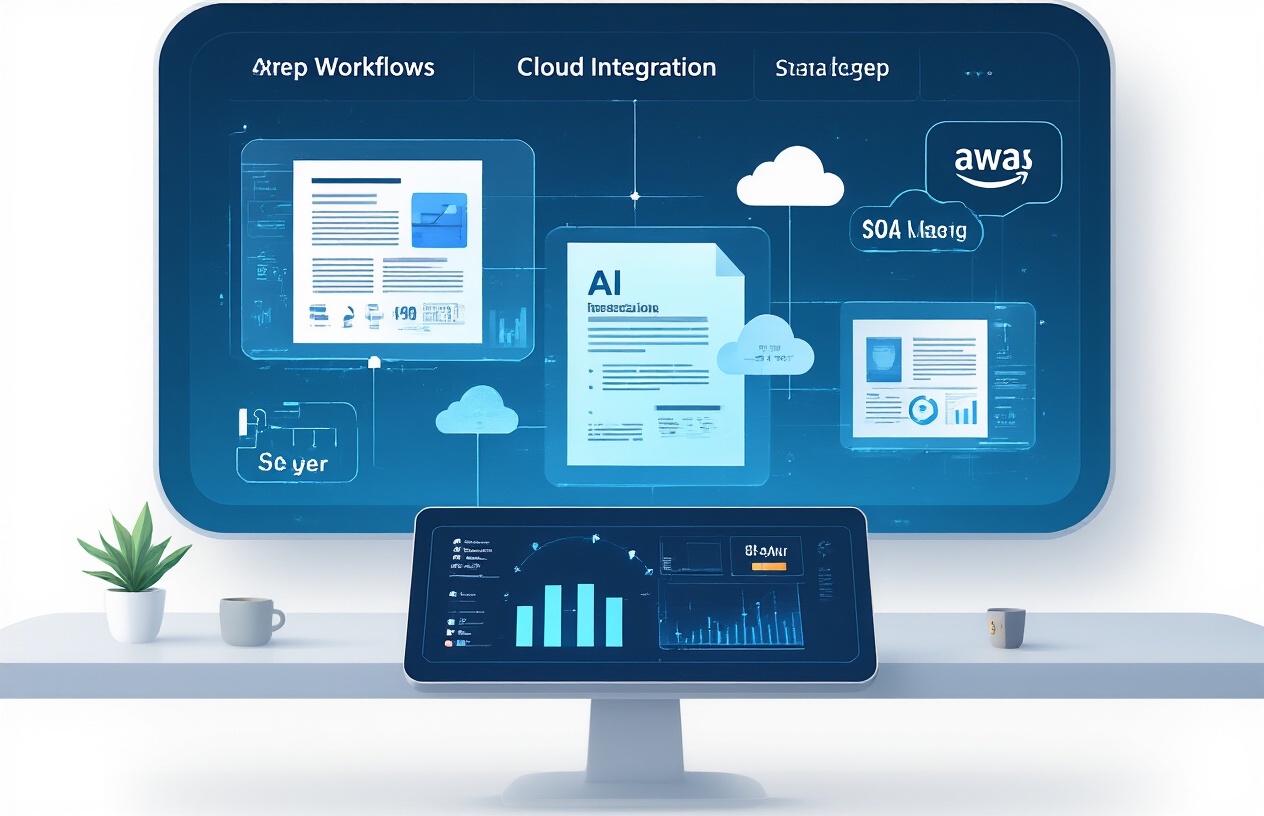
Emerging trends in document AI
Document AI is shifting fast. Gone are the days when simple OCR was enough. Today’s systems can understand context, detect sentiment, and make decisions. Multimodal processing is gaining steam – systems that can handle text, images, and even audio in documents.
Zero-shot learning is another game-changer. Your models can tackle document types they’ve never seen before without explicit training. And let’s talk about federated learning – it’s making it possible to improve models across organizations while keeping sensitive document data private.
The coolest part? Generative AI is reshaping what’s possible, creating summaries that sound human-written and transforming document data into actionable insights.
Continuous learning and model improvement strategies
Your document processing solution shouldn’t be static. Set up feedback loops where users can flag incorrect extractions or summaries. This gold mine of data helps refine your models.
A/B testing different model versions with a subset of documents shows you what works best. AWS SageMaker makes this surprisingly simple with its built-in experiment tracking.
Don’t sleep on synthetic data generation either. Creating artificial examples of rare document types helps your models handle edge cases they rarely see in the wild.
Expanding your solution with additional AWS services
AWS Comprehend Custom can recognize industry-specific entities your general models might miss. For complex document workflows, Step Functions lets you orchestrate the entire process without breaking a sweat.
Amazon Kendra takes searchability to another level with natural language querying across your document repository. And if you’re handling sensitive information, AWS Macie helps identify and protect PII.
The real power move? Connect your document processing pipeline to Amazon QuickSight for visualization or Amazon Forecast to predict document processing loads.
Preparing for evolving document types and formats
Documents aren’t what they used to be. Digital-native documents with embedded media are replacing traditional paper formats. Your solution needs to handle both.
Build format-agnostic processing pipelines that focus on semantic content rather than rigid templates. This future-proofs against changing layouts and styles.
Consider implementing version control for your document processing models. When new formats emerge, you can quickly roll back if needed.
Finally, keep an eye on emerging standards like JSON-LD for document metadata. Supporting these formats early gives you a competitive edge as they become mainstream.

The AWS AI ecosystem offers powerful tools to transform traditional document processing into intelligent, automated systems. By leveraging services for summarization, comparison, and SQL generation from natural language, organizations can extract valuable insights from their documents while reducing manual effort. These capabilities not only streamline workflows but also enable better decision-making through advanced analysis of document content.
As you build your intelligent document processing solution, remember to follow implementation best practices and design with future scalability in mind. The technologies discussed here represent just the beginning of what’s possible with document intelligence. By starting your AWS AI document processing journey today, you’ll position your organization to continuously evolve as AI capabilities expand, ensuring your document workflows remain efficient, accurate, and increasingly valuable to your business.












